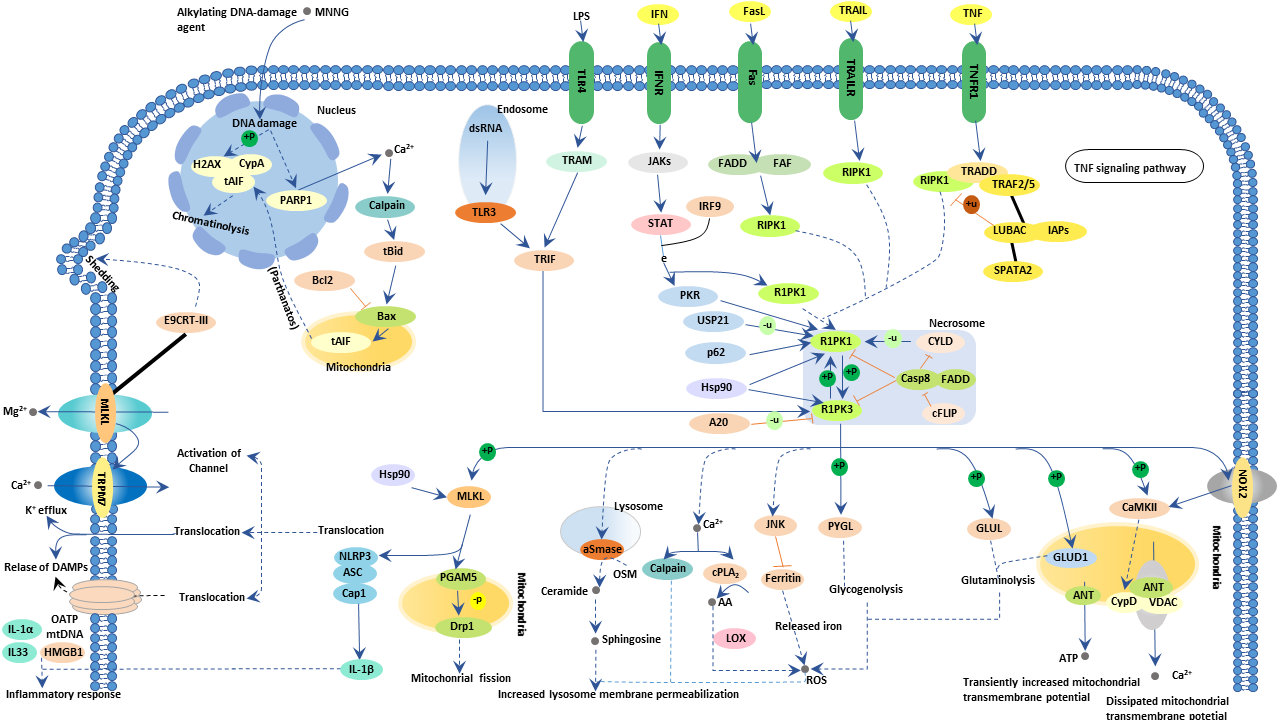
What is Necroptosis?
Necroptosis is a programmed form of necrosis, and is an alternative mode of regulated cell death mimicking features of apoptosis and necrosis.
Generally, cell demise and its survival are the fundamental features of metazoans to maintain the tissue homeostasis. On morphological basis, cell death is achieved by apoptosis, necrosis, and autophagy.
A plenty of studies has been performed on apoptosis and autophagy and reveals a clear picture of molecular mechanisms of apoptosis and autophagy which is recognized as a highly regulated process. Hence, apoptosis and autophagy are usually regarded as “programmed cell death”, but necrosis is considered as “un-programmed” due to deregulated activity.
What is The Function of Necroptosis?
Necroptosis is specific to vertebrates and may have originated as an additional defense to pathogens. Necroptosis also acts as an alternative "fail-safe" cell death pathway in cases where cells are unable to undergo apoptosis, such as during viral infection in which apoptosis signaling proteins are blocked by the virus.
Additionally, recent studies implicate it in a variety of disease states. In myocardial infarction and stroke, atherosclerosis, ischemia-reperfusion injury, pancreatitis, inflammatory bowel disease and a number of other clinically common disorders, necroptosis is of central pathophysiological relevance.
The process of Necroptosis
Necroptosis is a newly discovered pathway of regulated necrosis. It can be initiated by different stimuli, such as tumor necrosis factor (TNF), TNF-related apoptosis-inducing ligand (TRAIL), Fas ligand (FasL), interferon (IFN), LPS, viral DNA or RNA, DNA-damage agent and requires the kinase activity of receptor-interacting protein 1 (RIPK1) and RIPK3.
RIPK1 has important kinase-dependent and scaffolding functions that inhibit or trigger necroptosis and apoptosis. Its execution involves ROS generation, calcium overload, the opening of the mitochondrial permeability transition pore, mitochondrial fission, inflammatory response and chromatinolysis. Necroptosis participates in many pathogenesis of diseases, including neurological diseases, retinal disorders, acute kidney injury, inflammatory diseases and microbial infections.



